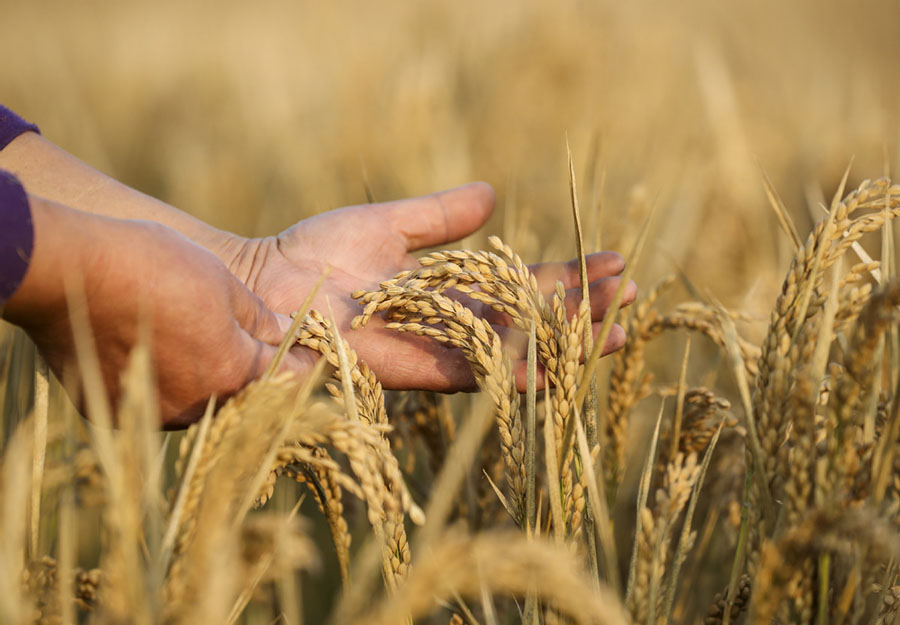Research sheds light on rice's natural defenses

A farmer holds late-season rice in his hand in Huai'an, Jiangsu province on Nov 24, 2022.
Rice plants attacked by the striped stem borer, a major paddy pest, send out airborne substances to warn their neighbors so they can prepare chemical defenses, Chinese scientists have found.
The findings can help enhance the widely planted crop's resistance against one of its most devastating pests, according to a study published in New Phytologist, a plant science journal, in mid-October, a boon to world food security.
HIPVs, or herbivore-induced plant volatiles, are complex mixtures of volatile organic compounds emitted by plants attacked by herbivores.
They play a crucial role in plants' interactions with insect communities, experts say.
For example, HIPVs can be used by insects to locate their hosts or prey, and to evade predators.
They can also be perceived by nearby plants and thus serve as airborne signals during inter-plant interactions.
The volatiles, emitted by plants attacked by herbivores or pathogens, can be sensed by other plants and lead to what is known as defense priming, which has been widely observed among corn, tomato and tea plants.
The study by agrarians from the Chinese Academy of Agricultural Sciences and a Swedish researcher went a step further.
They worked to decipher the process through chemical and molecular analysis and insect behavioral experiments.
Their research has found that pre-exposure to stem borer-induced HIPVs allows rice plants to activate a more intense response upon attack by creating a sudden surge of jasmonic acid and defensive proteinase inhibitors, which are harmful to the pest's larva.
Moreover, "primed" plants were found to emit larger amounts of volatiles that attract a wasp that parasitizes the stem borer.
"Understanding the details of the underlying processes should facilitate studies to elucidate similar interactions in other systems and may lead to strategies that exploit the odorous alert signals to manage the striped stem borer and other destructive pests," said the paper, which was partly funded by the National Natural Science Foundation of China.
Data provided by the Ministry of Agriculture and Rural Affairs showed that the striped stem borer and other major paddy pests and pathogens affected more than 57 million hectares of rice last year.
The research forms part of a broader effort by China to boost its food output through agricultural sciences and technologies.
The Ministry of Agriculture and Rural Affairs last month announced a program to step up breeding research in hopes of developing homegrown, high-yield varieties of crops and livestock to better feed the country's 1.4 billion people.
Rice is a staple food for 3.5 billion people worldwide, and more than 1 billion make a living through growing the crop, Qu Dongyu, director-general of the Food and Agriculture Organization, told a virtual forum last month. The crop also feeds around 60 percent of Chinese.
China has been leading the world in rice-related research. In 2004, Yuan Longping won the World Food Prize for developing hybrid rice, whose output was around 7.5 metric tons per hectare, compared with 4.61 tons globally.
Photos
Related Stories
- In pics: Late-season rice enters harvest season in south China's Guangxi
- In pics: rice harvest in Yangon, Myanmar
- Paddy rice harvest in Huangfu Village, northwest China's Shaanxi
- Chinese hybrid rice technologies contribute to Philippines' agricultural development
- High rice yield recorded in east China's demonstration farmland
Copyright © 2022 People's Daily Online. All Rights Reserved.









